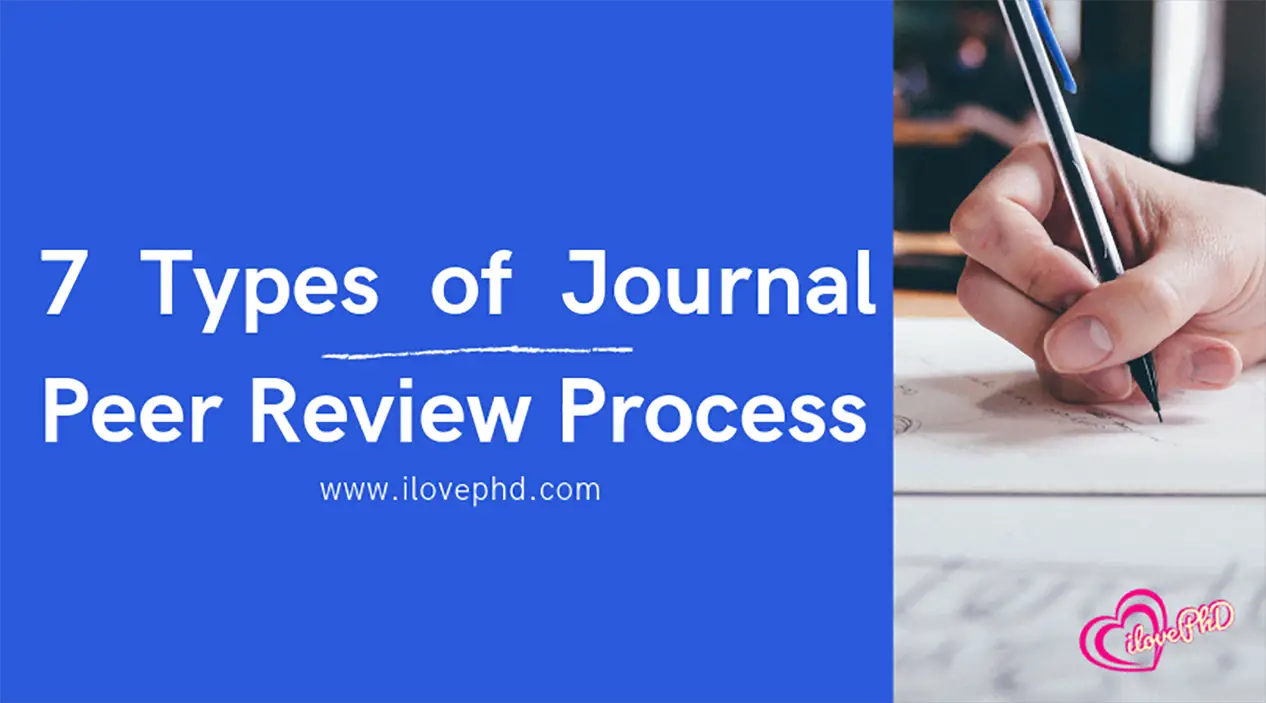Peer review has been a formal part of scientific communication since the first scientific journals appeared more than 300 years ago. The Philosophical Transactions of the Royal Society is thought to be the first journal to formalize the peer review process. In this article, ilovephd provides Types of Journal Peer Review Processes.
What are the types of journal peer review?
Journal peer review helps validate research, establish a method by which it can be evaluated, and increase networking possibilities within research communities. Despite criticisms, peer review is still the only widely accepted method for research validation.
There are 7 types of the peer review process to review the submitted manuscript in the journals.
7 Types of Journal Peer Review Process
1. Single-blind review
In the single-blind review process, the names of the reviewers are hidden from the author. This is the traditional method of reviewing and is the most common type by far.
Highlights of single-blind review
- Reviewer anonymity allows for impartial decisions – the reviewers will not be influenced by the authors.
- Authors may be concerned that reviewers in their field could delay publication, giving the reviewers a chance to publish first.
- Reviewers may use their anonymity as justification for being unnecessarily critical or harsh when commenting on the authors’ work.
2. Double-blind review
In the double-blind review process, both the reviewer and the author are anonymous.
Highlights of double-blind review
- Author anonymity prevents any reviewer bias, for example, based on an author’s country of origin or previous controversial work.
- Articles written by prestigious or renowned authors are considered on the basis of the content of their papers, rather than their reputation.
- Reviewers can often identify the author through their writing style, subject matter or self-citation.
- More information for authors can be found in our Double-Blind Peer Review Guidelines.
3. Open review
In this open review, the reviewer and author are known to each other.
Highlights of open review
- Some believe this is the best way to prevent malicious comments, stop plagiarism, prevent reviewers from following their agenda, and encourage open, honest reviewing.
- Others see open review as a less honest process, in which politeness or fear of retribution may cause a reviewer to withhold or tone down criticism.
4. More transparent peer review
Reviewers play a vital role in academic publishing, yet their contributions are often hidden.
Highlights of Transparent Peer Review
- Acknowledges the important role of reviewers
- Enriches published articles and improves the reading experience
5. Collaborative review
The collaborative review has two formats, one format is to have two or more reviewers work together to review the paper, discuss their opinions, and submit a unified report.
Another approach is to have one or more reviewers collaborate with the author to improve the paper until it reaches a publishable standard.
Highlights of collaborative review
- It can feel more constructive and less restrictive than more traditional approaches to peer review, as it removes the barriers that silo authors and reviewers.
- There is a risk of losing the benefit of having two, or more, independent evaluations.
- Collaboration between authors and reviewers also risks blurring the distinction between authoring and appraisal.
6. Post-publication review
With this peer review, the option for appraisal and revision of a paper continues – or occurs – after publication. This may take the form of a comments page or discussion forum alongside the published paper.
Highlights of post-publication review
- This approach reflects the evolving nature of knowledge.
- It allows papers to be corrected or improved.
- Revising papers after publication is incompatible with the notion of the version of the record, which seems integral to the current model of contextualizing new research through citation of previous literature.
- Shortcomings and errors within published material have traditionally been addressed through corrections, errata, and published discussion (e.g., letters to the editor).
7. Triple-blind peer-review
In this triple-blind peer review process, both the reviewers and the handling editors cannot know the identity of the authors/institution during the review process. Also, the identity of the authors is revealed only after the article is published. The authors can not see who reviewed the document.
Highlights of triple-blind peer-review
- In this way, we make sure that the reviewers and handling editors are not biased by the identity of the authors.
- We can ensure that the evaluated articles are solely based on scientific importance.
Hope, this article helps you to understand the difference between the different types of the peer-review process.


[…] It reviewed by a panel of reviewers selected from the journal. […]